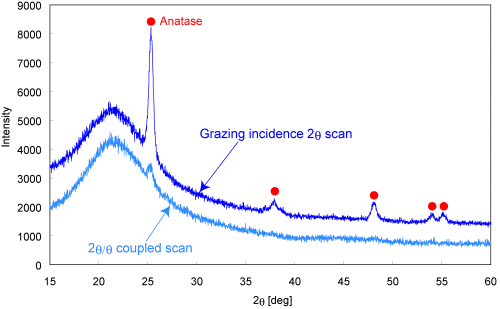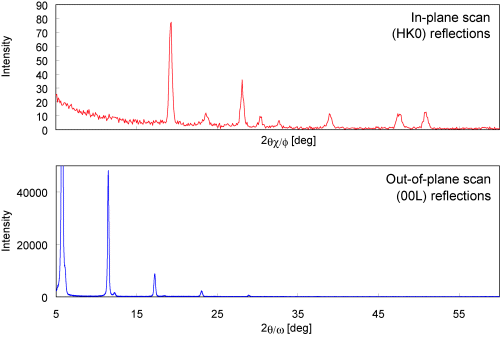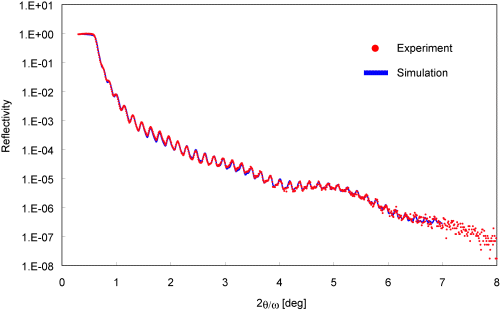Background
The ability of the Ultima IV to perform both in- and out-of-plane grazing incidence scans without the need for system reconfiguration revolutionizes thin film analysis. Layers as thin as 1 nm can be routinely measured with Rigaku's patented in-plane scanning goniometer. In-plane orientation and lattice parameters, difficult to measure with conventional asymmetric scanning, can be calculated directly from observed in-plane reflections. Supported thin film applications include:
- Phase identification
- Thickness
- Orientation/texture
- Interface roughnes
- Crystal perfection
- Density
- Strain/stress
Investigation
The use of glancing incidence scanning is shown to be critical in this measurement of a photo-catalyst thin film. Cross-beam optics (CBO) allow the measurement of thin films easily and in compliment to other bulk materials and powders. The figure below shows the enhancement of the diffraction data in glancing incidence mode compared to a conventional θ/2θ symmetric measurement. Diffraction peaks from the film are clearly visible in the glancing incidence mode.

On demand, combined in-plane and out-of-plane scanning provide a full picture of the texturing in thin films. In the example below, in-plane (00L) and out-of-plane (HK0) scans were made on a 50 nm thin Si/pentacene thin film structure. The in-plane measurement done at a 0.18° glancing incident angle provides a unique look at the orientation of the film.

X-ray reflectivity (XRR) measurements are used to determine thin film thickness, surface roughness, interface roughness, and density in layered materials. Again the one touch selection of parallel beam geometry provided by CBO, and automatic sample alignment critical to XRR makes performing these measurements simple. The example below shows both the calculated and experimental collected XRR curves from a three layer stack of oxidized GaAs, GaAs, InGaAs on a GaAs substrate.

